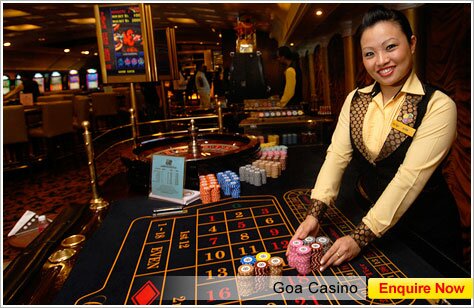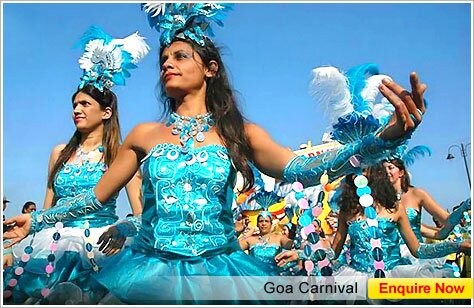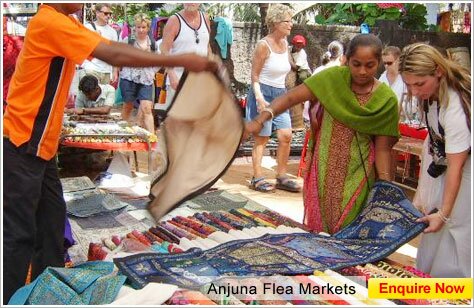Goa Travel Tourism >> Goa Travel Guide >> Museums & Art Gallery in Goa >> Archaeological Museum in Goa
Archaeological Museum in Goa
Archaeological Museum & Portrait Gallery |
| The museum has been functioning since 1964 in the abandoned convent of St. Francis of Assisi and is maintained by the Archaeological Survey of India (ASI). The collection consists of Brahmanical sculptures hero-stones and sati stones of the early and late medieval periods, portraits, coins and currency, revenue and court fee stamps, wooden and bronze sculptures and armoury of the Portuguese period. Rejuvenating The Look The Museum was rearranged and reorganised completely in connection with the CHOGM Retreat in Goa during 1982. A long hall lying to the left side of the entrance to the Museum was converted into 2 galleries by laying RCC floor with a newly constructed wide staircase at the extreme west to facilitate access to the first floor. The new Annexe building thus provided additional area to the existing Museum and finally the entire first floor re-laid with a teakwood floor resembling the original in order to bring uniform look to the whole complex. The 3-6m high bronze statue of Afonso de Albuquerque greets the visitors at the entrance. In the visitors lobby sea routes of early explorers, map showing site museums in India, map of Goa and a few photographs of monuments of Goa and Daman, and map showing centrally protected monuments in India are on display. The Key Gallery The key gallery in the ground floor serves as an introduction to the nature of exhibits in the museum. As one enters the key gallery the visitor is introduced to the short history of Goa in the form of an open book placed on a pedestal. The plan of the museum is on the left sidewall. Taking right turn one comes across a wall showcase containing middle and upper Paleolithic stone tools, Microliths and a few Neolithic Celts. A short historical background highlighting the prehistory of Goa and the location of prehistoric sites is shown in the map of Goa. The second showcase deals with the early history of Goa. The excavated materials from Chandor, one of the ancient capital cities of goa are displayed in this showcase along with the ground plan of a Brahmanical temple and available early historical antiquities i.e., cast copper coins of 3rd century BC, copper nails, rings, etc. The next phases of cultural sequence are shown with the help of available sculptures of the Brahmanical deities and displayed in chronological order with the bust of siva and parvati, followed by the sculptures of the Silaharas and Kadambas of Goa |
|
Exhibits / Collection
Other objects on displays are lintel of a temple depicting various types of Shikharas, architectural pieces, sati-stones, hero-stones, an inscribed slab containing Kannada inscription of 'Devaraya', the Vijayanagar king, recording the grant of a Jaina Basti, Arabic and Portuguese inscriptions, wooden statue of John, the Baptist, paintings on wood / canvas of Portuguese Governors Pedro de Castro, Fernando Martings Mascarenhas, nativity of Jesus, Jesus helping St. Joseph, etc. royal coat of arms, Bishop coat of arms on stone, wooden sculptures of infant Jesus, St. Mary sculptured panels representing floral decorations, Goan type basket - full of fruits and the tombstone of D. Diogo de Noronha, the first captain of Daman, Brahmanical Gods and Goddesses and Christian Saints are also exhibited in a showcase in the centre of the big hall. Gallery 2,3,4 and 5 are located in the quadrangle in the ground floor. In Gallery 2 are displayed models of various types of Shikharas, replica of pillar, architectural pieces, a Shiva-Linga and a 'Nandi'. In Gallery 6, the visitor can have a glance at the short history of the paintings of Governors and Viceroys of Goa, before they proceed to appreciate a large number of portraits on wood and canvas. In the vertical type coin showcase are exhibited the Portuguese currency and silver /copper/lead/brass coins. The major denominations include the Portuguese Manoel, Leal and the indigenous Pardav, Tanga, Xerafins, Rupia, etc. In this gallery, wooden sculptures of Jesus, St. Francis Xavier, St. Joseph and other Christian Saints are also on display. A model of the fort of Diu is on view in this gallery. In Gallery 7 are displayed the portrait paintings of Governors/Viceroys. In the showcase are exhibited the plaster cast bust of Philippe Bernado Guedes, Governor, on one side and the wooden statue of St. Peter on the other side. In Gallery 8 are displayed the paintings of Governors/ Viceroys, President of Portugal and Dr. Salazar, the prime minister of Portugal during whose time Goa was liberated by Indian army on 19th December 1961. In a small niche on the northern wall is the bust of Queen Maria da Glorida of Portugal. In front of the Museum building are exhibited six canons of different sizes. A photograph of Vassalo-de-Silva, the last Governor General is on display.
|
|
Display Sections
Displaying Some Priceless PossessionsThe important exhibits on display in this Gallery are the standing Lord Vishnu accompanied by Goddess Lakshmi and Garuda on left and right respectively, with exquisite carvings accommodating ten incarnations on the Prabhavali, standing Surya accompanied by Danda and Pingala, Gajalakshmi, Mahishasuramardini and seated Uma-Maheshvara. |
General Information |
|
Timings
Open Daily Except Fridays From 10.00 am To 5.00 pm.
|
|
Location
Old Goa, Goa.
|
|
Origin
1964.
|
Prime AttrACTIONs of Panjim |
|
At the place where two of Goa's famous rivers meet the Arabian Sea is the secluded bay of Dona Paula with a fine view of the Marmagao Harbour. more.. |
|
Built in 1602, the only ruin of the Church of St. Augustine on the Holy Hill at Old Goa near the Nunnery, is a lofty 46-metre high tower defying the torrential rains. more.. |
|
About 2-km on the main road towards Ponda, a Kuchcha road branches off to a place where a cross is fixed. The road leads to a hill on which, commanding a picturesque view, is the Chapel of Our Lady of the Mount more.. |
|
In the Holy Hill, on the way to the Church of Our Lady of the Rosary, is a huge three-storeyed building of laterite which was originally lime-plastered but is now plastered with cement. more.. |
|
Not far to the west of the Basilica of the Bom Jesus is the Holy Hill at the extremity of which is the Church of Our Lady of the Rosary. more.. |
|
To the west of the Se Cathedral is the former palace of the Archbishop that connects the Se Cathedral to the Convent and Church of St. Francis of Assisi. more.. |
|
It is built of laterite plastered with lime mortar, with tiled roof supported by wooden rafters is a plain chapel with only one altar. more.. |
|
Aguada Fort, which crowns the rocky flattened top of the headland, is the best-preserved Portuguese bastion in Goa. Built in 1612 to protect the northern shores of the Mandovi estuary from Dutch and Maratha raiders more.. |
|
The Museum of Goa is housed at a new Building at the Patto Plaze near the Ourem creek, Panaji. The most noteworthy feature of Panjim's State Archeological Museum is its imposing size, which stands in glaringly inverse proportion to the scale of the collection inside. more.. |
|
Up in the lush foothills of the Western Ghats, Bondla is good place to see Sambhar and Wild Boar. It is smallest of the Goan Wildlife Sanctuaries. Its area is 8-sq-kms but easiest one to reach. more.. |
|
A mere 45 minute bus ride up the coast from the capital, Calangute is Goa's busiest and most commercialized resort more.. |
|
On the way to Dona Paula, 1-km ahead of the confluence of the Arabian Sea and Mandvi River, under the palm shade, is "Gasper Dias" or Miramar Beach and is just 3-km away from the capital city of Panjim. more.. |
|
The Portuguese Viceroy Redondo commissioned the Se, or St. Catherine's' Cathedral, southwest of St. Cajetan's, to be "a grandiose church worthy of the wealth, power and fame of the Portuguese who dominated the seas from the Atlantic to the Pacific". more.. |
|
3-km away from Banastari Bridge on Panaji-Ponda Road is situated the noteworthy temple dedicated to Devaki Krishna at Marcel. The deity is said to have been brought from Chorao in Tiswadi to Mayem in Bicholim and then shifted to its present place during the days of religious persecution by the alien rulers. more.. |
|
Situated in West Goa, the Mahadeva Temple in Tambdi Surla is the state's only prominent reminder of the pre-Portuguese temple architecture. Maintained by the ASI (Archeological Survey of India), this 12th century temple boasts of some fine relief's on the 'Shikhara' (spire) depicting a plethora of Gods and Goddesses. more.. |
|
The temple tour can be resumed by offering prostrations unto Goddess Mahalakshmi, the presiding deity of Panaji, the capital of Goa. The main temple has been reconstructed recently. The main festivals at this temple are Navaratri and Chaitra Purnima. more.. |
|
As one tries to return to Panaji from Harvalem, one can visit the famous temple of Sri Saptakoteshwar Naroa, Bicholim. Sri Saptakoteshwara was the patron deity of the Kadambas who had built a beautiful temple dedicated to this deity at the Diwar Island. more.. |
|
From Kansarpal one can proceed to Sanquelim, the hometown of the Ranes of Satari who played key role in Goa's freedom struggle. The ancestors of the present Rane family, who are believed to have migrated to Goa from Udaipur about 600 years ago, built the famous Sri Vithal temple situated on the bank of Valvanta River. more.. |
|
Further to the west of the Church of St. Francis of Assisi is the chapel of St. Catherine. Built of laterite blocks it has a tower on either side of the façade. The chapel in the interior, having only one altar is plain more.. |
|
Opposite the Se Cathedral, beyond the road is the large and beautiful church of St. Cajetan built of laterite blocks, which were lime plastered. more.. |
|
Nothing remains of the Church of the Carmelites excepting the façade and a raised pavement, which served as an altar. Its location is to the southeast of the Church of St. Cajetan more.. |
|
Situated to the east of the tower of St. Augustine it is a plain looking building constructed in the beginning of the 18th century. The convent was abandoned in 1835. The Society of the Misericordia occupied it for some time. more.. |
|
On the southern outskirts of Old Goa is a hill on which stand this convent and church. more.. |
|
Immediately to the south of the main road is the Professed House, a two-storeyed laterite building covered with lime plaster. Despite the opposition, which the Jesuits faced, the building was completed in 1585. more.. |
|
To the west of the tower of St. Augustine is the Royal Chapel dedicated to St. Anthony, the national saint of Portugal and held in great veneration by the Portuguese. It was built in the beginning of the 17th century. more.. |
|
Condolim Beach
Four or five years ago, Candolim, at the far southern end of Calangute beach, was a surprisingly sedate resort, appealing to an odd mixture of middle-class Bombayites, and Burgundy-clad Sannyasins taking a break from the Rajneesh Ashram at Pune. |
Hotels & Resorts in Goa |
|||
more goa hotels...
|
more goa resorts...
|
||
Suggested Tour Packages
Tour Code: GTT - 001
Duration: 8 Days / 7 Nights Destinations Covered: Mumbai - Goa - Cochin - Mumbai |
 |
|
|
|
||
Tour Code: GTT - 004
Duration: 10 Days / 9 Nights Destinations Covered: Trivandrum - Kovalam - Kanya Kumari - Vattakottai - Kovalam - Varkala - Cochin - Goa |
 |
|
|
|
||
Tour Code: GTT - 006
Duration: 5 Days / 4 Nights Destinations Covered: Goa - Panjim - Savoi - Panaji |
 |
|
|
|
||
| » Other Goa Holiday Packages | ||
North India Tour with Goa
Rajasthan Heritage with Goa
Goa Travel Package
Goa Beach Holidays
Goa Beach Vacation
Romantic Goa Honeymoon
Goa Tour Package
Travelling in Goa
Goa Vacation
Goa Trips
Goa Vacation Package
Goa Beach Tour
Rajasthan Heritage with Goa
Goa Travel Package
Goa Beach Holidays
Goa Beach Vacation
Romantic Goa Honeymoon
Goa Tour Package
Travelling in Goa
Goa Vacation
Goa Trips
Goa Vacation Package
Goa Beach Tour
... more Goa Tour Package
Goa Luxury Hotels
Hotel Taj Exotica
The Leela Palace Hotel
Bambolim Beach Resort
Majorda Beach Resort
Cidade De Goa
Hotel Taj Exotica
The Leela Palace Hotel
Bambolim Beach Resort
Majorda Beach Resort
Cidade De Goa
...more Luxury Hotels
...more Deluxe Hotels
Goa Budget Hotels
Alor Holiday Resort
Anjuna Beach Resort
Dona Paula Beach Resort
Resorte De Goa
Don Jóao Resort
Goa Guest Houses
Alor Holiday Resort
Anjuna Beach Resort
Dona Paula Beach Resort
Resorte De Goa
Don Jóao Resort
Goa Guest Houses
...more Budget Hotels
...more Goa Heritage Hotels
...more Resorts in Goa
Goa Boutique Hotels
Banayan Tree Courtyard
Devaaya Ayurvedic Spa
Montego Bay Beach Village
Vainguinim Valley Resort
Banayan Tree Courtyard
Devaaya Ayurvedic Spa
Montego Bay Beach Village
Vainguinim Valley Resort
...more Goa Boutique Hotels
...more Goa Hotels
...more South Goa Hotels
|
Plan a Tour
|
Book a Hotel
|
...more Goa Beaches
...more Goa Churches
Others
...more Travel Guide
...more Things to Do
...more Travel Guide










